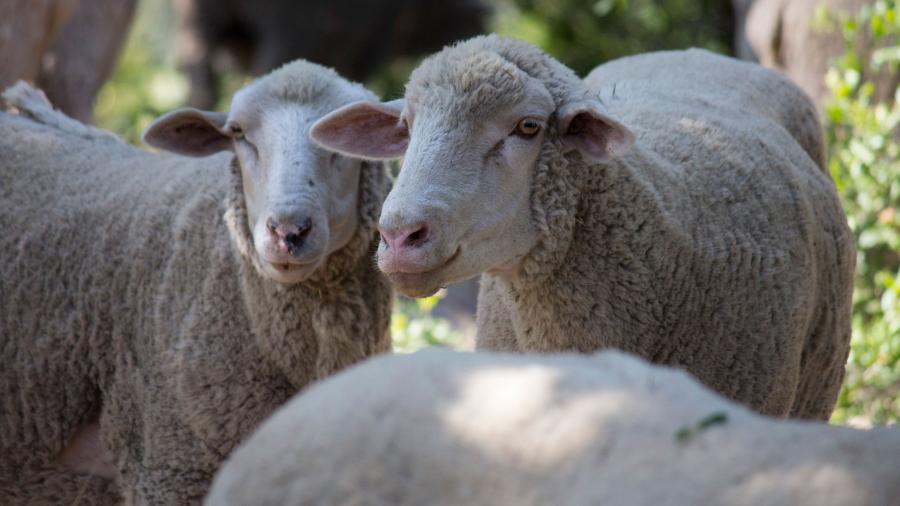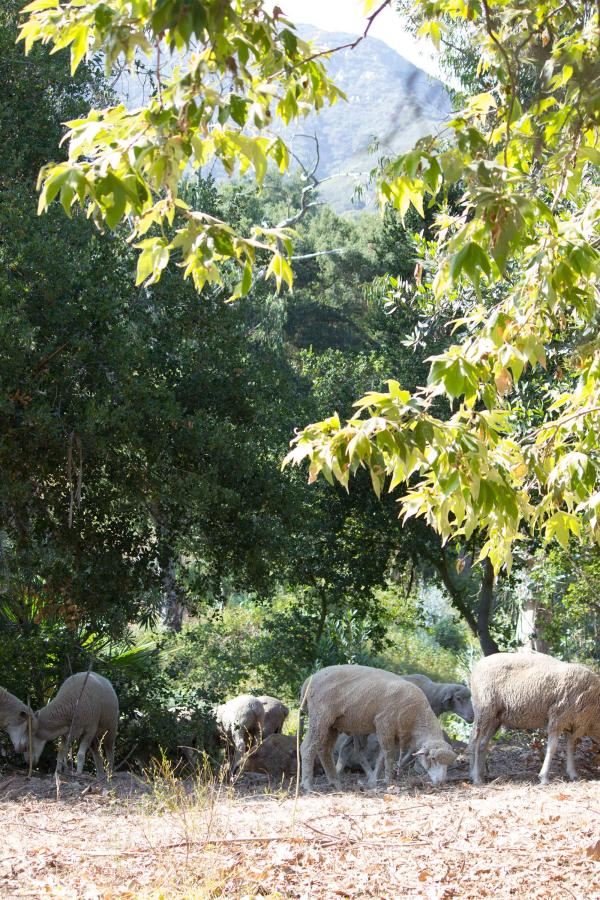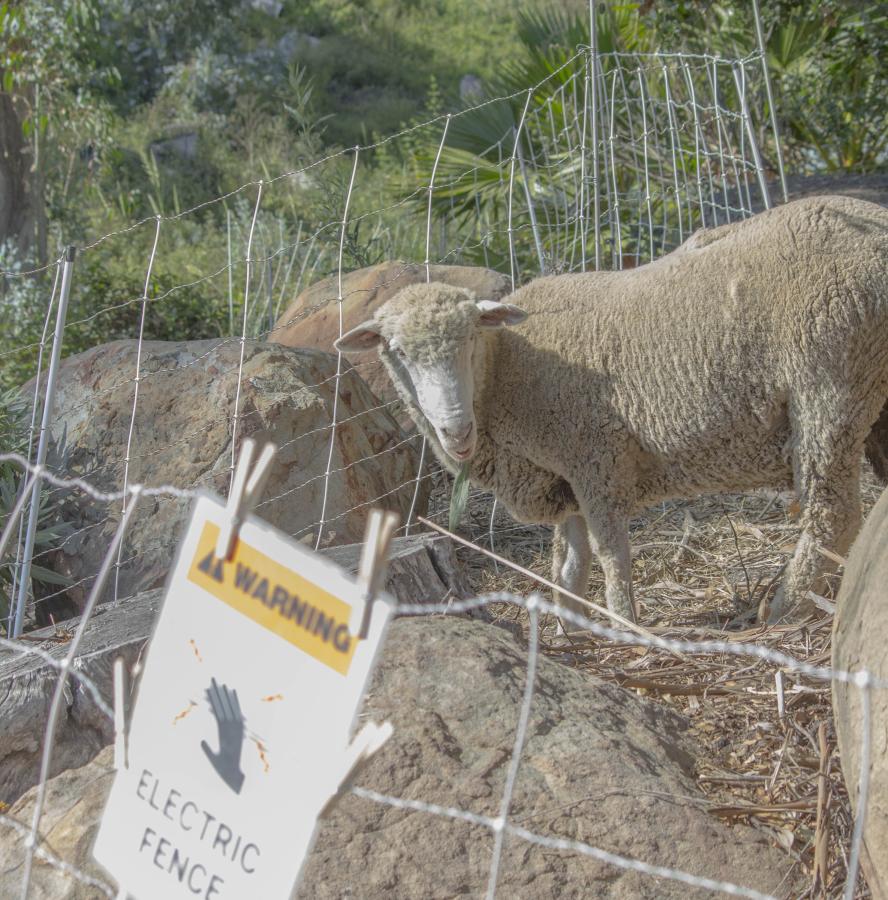Westmont News
A Natural Defense Sheep Clear Brush to Curb Fires

By
Scott Craig
Westmont has welcomed a herd of sheep to campus to eat non-native vegetation and reduce wildfire fuel in the barranca west of Voskuyl Library, adjacent to the dry Westmont Creek. Coordinated by Montecito Fire, the flock from Cuyama Lamb will consume the grasses before they dry out later this summer and have the potential to feed a wildfire.

“As we saw in the Thomas Fire and the Tea Fire, this canyon is notorious for funneling fire down into the community,” says Maeve Juarez, a wildland fire specialist for Montecito Fire. “We’re really sensitive to controlling the flashy fuels in this area, trying to prevent dangerous ember cast, when heavy winds carry embers downwind to a new area and ignite spot fires.”
“Fire risk assessors still identify this ravine as a high priority area for fire mitigation,” says Laura Drake Schultheis, Westmont assistant professor of biology, who has worked with ecology students to restore the property to a native oak woodland. “A big part of that mitigation includes containing exotic weeds that sprout up every year, and when we reduce those types of fuels, we help protect both Westmont and the surrounding communities from future fire risk.”
Schultheis says that Montecito Fire has been reducing flashy fuels, which ignite quickly and spread rapidly, through hand-pulling and weed-whacking in the past few years, but never with sheep. “Grazing provides a very effective and eco-friendly alternative to these methods with less noise and the added benefit that surrounding communities enjoy watching the sheep do their thing,” she says.
The herd, surrounded by a portable electric fence, will graze in the ravine for about three weeks. “It sounds kind of funny, but it’s based on palette preferences,” Juarez says. “We’ll use the first few days to gauge what they like eating and assess it from there.”

They hope the sheep, which are finickier than goats, will eat tobacco, tumbleweeds, castor bean and eucalyptus regrowth. The fencing will keep them away from the Westmont Creek riparian area and native plant species. “Sheep work really well with restoration projects as they’re less invasive, and we can target some of the species we’re trying to eliminate.”
The oak woodland restoration project began in summer 2023 after Montecito Fire removed many dead and dying eucalyptus trees in the area. Schultheis and her ecology students took the opportunity to plant about 60 coast live oaks, improving the ecosystem while increasing wildfire resilience in the interface between wildland and urban areas. Last spring, Plant Classification and Biodiversity students checked on the oaks, which had grown to more than three feet tall, and planted additional trees.